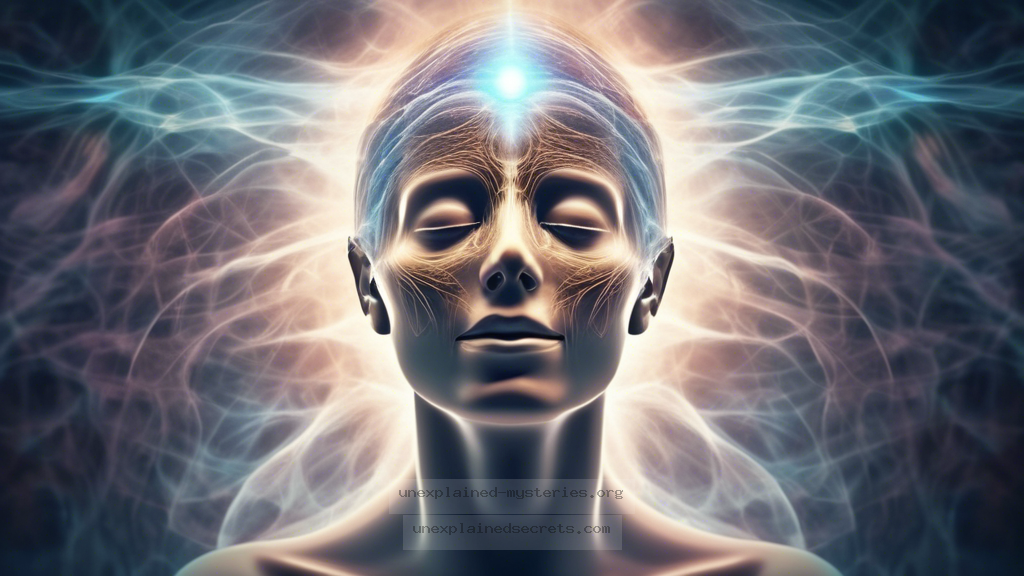What Do Consistent Near-Death Experience Reports Reveal About Consciousness After Clinical Death?
What Do Consistent Near-Death Experience Reports Reveal About Consciousness After Clinical Death?
The phenomenon of near-death experiences (NDEs) has intrigued humanity for centuries. As individuals report a variety of extraordinary experiences during moments of clinical death or extreme peril, the question arises: What do these consistent near-death experience reports reveal about consciousness after clinical death? This inquiry opens a window into the mysteries of consciousness, the nature of existence, and even the potential for life after death. Understanding these reports not only enriches our spiritual awareness but also challenges our scientific understanding of life and consciousness.
Historical Context of Near-Death Experiences
The concept of NDEs is not new; historical records indicate that such phenomena have been documented across different cultures and eras. The ancient Egyptians, for instance, described the “Weighing of the Heart” ceremony in texts like the Book of the Dead, where the soul’s journey and its moral worth were assessed after death. Similarly, in ancient Greece, philosophers like Plato wrote about the soul’s immortality and its journey beyond earthly life.
In modern times, the term “near-death experience” was popularized by Dr. Raymond Moody in his 1975 book “Life After Life,” which compiled numerous accounts from individuals who experienced NDEs. His work sparked further research and interest in understanding these experiences, leading to various studies that sought to identify common elements across different cultures and belief systems. This historical lens helps frame the contemporary exploration of NDEs within a larger dialogue about consciousness and afterlife beliefs.
Core Concepts of Near-Death Experiences
NDEs typically encompass a range of experiences, including:
- A sense of detachment from the body
- Feelings of peace and joy
- Experiencing bright lights or tunnels
- Encounters with deceased loved ones or spiritual beings
- A life review or assessment of one’s actions
Notable studies indicate that around 10-20% of people who have been revived after clinical death report having had NDEs. These experiences are often transformative, leading to lasting changes in perspective, behavior, and beliefs about life and death.
Scientific Research and Evidence
Scientific investigation into NDEs has expanded significantly over the last few decades. Researchers like Dr. Pim van Lommel, a cardiologist, published studies indicating that consciousness might exist independently of brain activity. His research included a study involving patients who had suffered cardiac arrest, where a significant percentage reported detailed NDEs, despite being clinically dead at the time.
Moreover, a meta-analysis conducted by the University of Virginia revealed consistent patterns in NDE reports, suggesting that these experiences are not merely hallucinations or psychological responses to trauma. Rather, they reflect something more profound about the human experience and consciousness itself.
| Study | Findings |
|---|---|
| Dr. Pim van Lommel’s Study | Patients reported vivid NDEs despite being clinically dead, indicating a disconnection between brain function and conscious experience. |
| University of Virginia Meta-Analysis | Identified consistent patterns in NDE reports, suggesting a commonality across cultural and personal backgrounds. |
Practical Implications of NDE Research
The implications of NDE research extend beyond individual experiences, impacting various fields such as psychology, medicine, and spiritual studies. For psychologists, understanding NDEs can provide insights into human consciousness and the psyche’s resilience under extreme stress. In medicine, NDEs can influence the approach to end-of-life care, emphasizing the importance of addressing patients’ emotional and spiritual needs, alongside their physical well-being.
Furthermore, NDEs often lead to discussions about the nature of consciousness itself. Are our thoughts and awareness confined to our physical bodies, or is there a realm of consciousness that transcends biological limitations? This inquiry has prompted interdisciplinary collaborations, bringing together neuroscientists, psychologists, and theologians to explore the deeper meanings of consciousness and existence.
Alternative Perspectives on NDEs
While many researchers and experiencers advocate for the interpretation of NDEs as evidence of consciousness beyond death, alternative viewpoints exist. Skeptics argue that NDEs can be explained through physiological and psychological processes, such as brain activity during trauma, lack of oxygen, or the release of endorphins.
For instance, some neuroscientists suggest that the vivid experiences reported during NDEs may be the brain’s way of coping with extreme stress, akin to a protective mechanism. These explanations challenge the spiritual interpretations and prompt further investigation into the biological underpinnings of consciousness.
Common Misconceptions About NDEs
Many misconceptions surround near-death experiences, often perpetuated by sensationalized media portrayals or anecdotal reports. One major misconception is that all NDEs are universally positive. While many people report feelings of peace, some describe distressing experiences that can involve fear or confusion.
Another misconception is that NDEs provide definitive proof of an afterlife. While the consistency of reports suggests a commonality in human experience, it does not conclusively prove the existence of life after death. Instead, NDEs should be viewed as subjective experiences that may offer insights into the nature of consciousness rather than absolute truths about existence.
Best Practices for Investigating NDEs
For researchers and individuals interested in studying NDEs, a multidisciplinary approach is essential. Here are some best practices to consider:
- Collect Comprehensive Accounts: Gather detailed narratives from individuals who have experienced NDEs, considering cultural, psychological, and personal contexts.
- Engage with Experts: Collaborate with professionals from various fields, including psychology, neuroscience, and religious studies, to obtain a well-rounded understanding.
- Maintain Objectivity: Approach the subject with an open mind, recognizing personal biases and the limitations of current scientific understanding.
- Utilize Technology: Employ advances in neuroimaging and psychological assessments to investigate the brain’s role in NDEs.
Future Developments in NDE Research
As technology and research methodologies continue to advance, future developments in NDE research may yield new insights into consciousness and existential questions. Emerging fields such as neurotheology, which explores the relationship between brain function and spiritual experiences, hold promise for deepening our understanding of NDEs.
Furthermore, ongoing studies focusing on the long-term psychological effects of NDEs could illuminate how these experiences influence individuals’ lives post-event. With a growing interest in consciousness studies and the intersection of science and spirituality, the future of NDE research appears both exciting and promising.
Conclusion
In summary, the exploration of near-death experiences reveals a complex interplay between consciousness, cultural beliefs, and human experience. While NDEs often provide compelling accounts that suggest consciousness may persist beyond clinical death, alternative perspectives remind us of the need for rigorous investigation and open-minded inquiry. As we delve deeper into this captivating subject, we not only challenge our understanding of life and death but also enrich our spiritual perspectives and appreciation for the mysteries of existence. The consistent reports of NDEs invite us to ponder profound questions about the nature of the self, consciousness, and what lies beyond the veil of death.
Other Articles
Recent Posts
- What Happened to Flight MH370? The Conspiracy Theories That Still Haunt Us
- What Secrets Lurk Within the Walls of the Infamous Trans-Allegheny Lunatic Asylum?
- What Evidence Supports the Existence of Bigfoot in the Pacific Northwest?
- What Happened to the Indus Valley Civilization? Unraveling the Mysteries of Ancient Urban Life
- Can Telepathy Be Scientifically Proven Through Laboratory Evidence?







